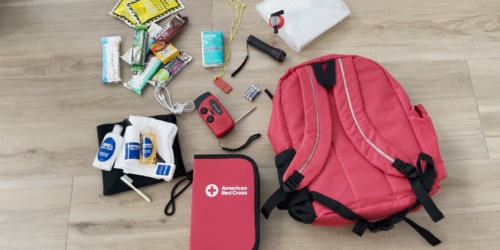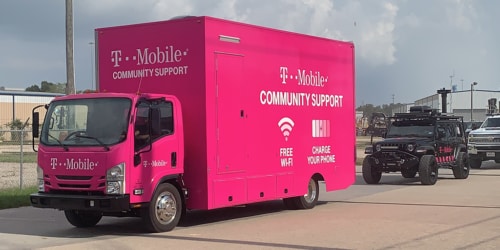The boom in virtual medical care couldn’t have come at a better time
Living in COVID times is challenging, not least of all when in need of a doctor. Maybe you have a primary care physician, but stay-at-home restrictions, work-from-home status, watching the kids or just plain risk of exposure make seeing them a challenge. Maybe you don’t have a regular doctor, but you’re worried that your dry cough isn’t going away or that your headaches won’t stop.
One way to help you get answers is telemedicine or telehealth — the practice of remotely accessing professional health care. Depending on a patient’s personal health history and description of their symptoms, a provider can diagnose an issue through a virtual visit via laptop, tablet or mobile phone. As a mainstream alternative to exam-room visits with doctors, telehealth preserves personal protection equipment that are in short supply. Above all, it’s a matter of convenience. And according to doctors, it’s here to stay.
All about communication
“Much of our ability to provide telemedicine is the patient telling us how they feel,” says Dr. Kent Kiracofe, a primary care physician at Stonecreek Family Physicians in Manhattan, Kansas. “But telemedicine is safe, and it easily satisfies social distancing requirements. I still can’t look in their ears. I can’t listen to their lungs. I can’t press on their belly. But in this day and age, it’s clearly an advantage to not seeing them at all.”
“I hated it at first,” says Dr. Andrew Benedict of St. Luke’s Health System in Kansas City. “I wanted to see my patients in an examination room, and at times it felt a bit superficial. But I’ve realized it can be more efficient and certainly quicker.”
Benedict estimates 20 percent of his visits involve telemedicine — almost all post-op, because as a trauma surgeon, he rarely has pre-op visits. He typically deals with patients whose injuries are so sudden and severe that they require immediate medical attention — accident victims, heart attacks, physical abuse, catastrophes.
A memo in mid-March from the St. Luke’s administration called for care providers to use telemedicine whenever they could. The motive? Minimize exposure to the coronavirus.
Ensuring insurance rights
According to the American Medical Association, all states allow a physician to establish a relationship with a new patient via telemedicine. However, only 26 states have laws that require private insurers to reimburse health care providers for services delivered through telemedicine. These are often referred to as parity laws. Ten more states are also considering legislation to do the same. (In general, private payers can’t take the patient’s location into account when deciding to cover a video visit, making it possible for covered patients to be at home or work during the encounter, says the American Telemedicine Association.)
The good news is that even in states without parity laws, many insurers recognize the value of telemedicine and have decided to cover video visits on their own even in states that do not require it. Regardless, it is still a good idea to check with your insurance company to see if your appointment is covered.
An app for it
One of the apps you’ll likely come across in searching for a new doctor and telehealth service is 98point6, which offers on-demand, text-based primary care. Dozens of full-time, board-certified primary care physicians provide diagnoses and treatments through the app. Doctors can also see a patient’s pharmacy information and send a prescription so the patient can pick it up at their convenience.
“It’s truly a primary care experience rather than a traditional telehealth visit,” says Brad Younggren, 98point6’s chief medical officer. “Doctors are doing almost everything they’d do in a brick and mortar office.”
Reaching 98point6’s “virtual clinic” takes seconds. Users log in and are greeted by an automated assistant that asks, “What brings you into the clinic today?” The more information users provide the AI, the better it discerns the problem. The AI then hands off the patient — and their information — to a live physician.
Because the vast majority of visits are completed entirely by text, people can access the app at any time and in non-traditional settings — on a bus, at work — for maximum convenience.
Younggren spent most of his career in emergency medicine. Now based in Seattle, where the company has headquarters, he says 98point6 strives to eliminate unnecessary brick and mortar visits.
“We want to exist within the health care ecosystem — we’re not building a new ecosystem,” he says. “We’re not trying to displace the primary doctor relationship — we want to support it. For the other half of the country that doesn’t have a relationship with a primary care physician, we want to offer convenient and affordable access to primary care that they don’t otherwise have.”
Telemedicine beyond COVID-19
There are many signs that while a mobile-first approach may be new to many, it’s certainly going to become more and more normal. For instance, Teladoc reported a nearly 100 percent increase in telehealth visits on its platform year over year and expects this full year total to be somewhere between 8 and 9 million visits.
An in-person exam typically takes about 15 minutes. A telehealth visit takes between 5-10 minutes, allowing doctors to see more patients while reducing the foot traffic — and accompanying germs — in an office or clinic.
Whether Dr. Kent Kiracofe’s patients use telehealth to avoid travel — his furthest patients live 30 minutes away — others who live nearby simply want to alleviate any coronavirus concerns. He anticipates the percentage of televisits will drop once social distancing restrictions are eased, but he believes the practice isn’t going away.
“We will continue to offer it because of time and convenience,” Kiracofe says. “I guarantee a lot of patients will ask for it going forward.”
Benedict, the doctor in Kansas City, agrees. The conveniences — and the efficiencies and benefits they create — are too good to leave behind.
“There’s no doubt it will remain a viable treatment option long after the pandemic is lifted,” he says.
At a time where there’s no silver bullet just yet, it’s nice to think there is something of a silver lining.
Written and reported by Tom Cook and Jonathan Zwickel. T-Mobile does not sponsor or endorse the mentioned companies.





